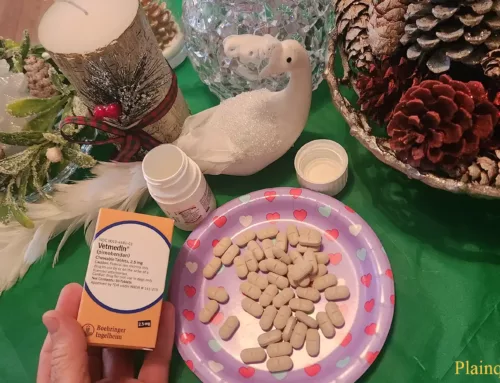Tawaret
‘Head of a hippopotamus with the arms and legs of a lion, the back and tail of a crocodile, and the breasts and stomach of a pregnant woman. Tawaret was a goddess who protected women during pregnancy and childbirth. Many of the gods and goddesses in ancient Egypt had temples built to honor them. Other gods and goddesses like Tawaret and Bes were worshipped by people in their own homes. This is an amulet of the goddess Tawaret. People often wore amulets like this, or kept them in their homes
Isis
Woman with headdress in the shape of a throne A pair of cow horns with a sun disk. Isis was a protective goddess. She used powerful magic spells to help people in need. Isis was the wife of Osiris and the mother of Horus. Since each pharaoh was considered the ‘living Horus’, Isis was very important. isis with Horus isis is often shown holding Horus on her lap. Isis is associated with thrones because her lap was the first ‘throne’ that Horus sat upon. This amulet is called the ‘Isis knot’ and is a symbol of protection. A temple was built to honor Isis at Philae. It is still standing today.
Hathor
‘Woman with the ears of a cow or A cow. Woman with a headdress of horns and a sun disk
Hathor was a protective goddess. She was also the goddess of love and joy. Hathor was the wife of Horus, and was sometimes thought of as the mother of the pharaoh. Hathor sistrum Hathor was connected with foreign places and materials. For instance, Hathor was the goddess of the desert and the turquoise mines in the Sinai. A large temple was built to honor Hathor at Dendera
Nun
The primeval water that encircles the entire world, and from which everything was created, personified as a god. He is considered to be a more ancient god then the sun-god Re, who arose from this water. He is called ‘father of the gods’, which refers to his primacy rather than literal parentage. With the goddess Naunet he forms a pair in the Ogdoad of Hermopolis. Nun played no part in religious rituals and had no temples dedicated to him. He was symbolized by the sacred lakes associated with certain temples, such as the ones at Dendera and Karnak. Nun is depicted in human form holding the solar barque above his head.
Ma’at
Woman with a feather on her head or A feather Ma’at was the goddess of truth, justice and harmony. She was associated with the balance of things on earth. Ma’at pendant
Ma’at was the daughter of the sun god Ra. Pharaohs are frequently shown in wall reliefs making an offering of Ma’at to the gods-showing that they are preserving harmony and justice on earth. The vizier who was in charge of the law courts was known as the ‘priest of Ma’at’.
shu
Shu-The embodiment of the sky. In the Enneadof Heliopolis he is the son of Atum and brother-husband of Tefnut. He was one of the first deities to be created by Atum, either from his semen or the muscus of his notrils. With Tefnut he became the father of Nut (the sky) and Seb (the earth). He raised the body of his daughter high above the earth and separated thus heaven and earth. The connection of Atum and Re, as Atum-Re, makes Shu a ‘son of Re’ and as such the brother of the Egyptian king (who calls himself a ‘son’ as well. Shu is depicted in human form wearing an ostrich feather (the hieroglyph for his name), with his arms raised to support Nut above the supine form of her brother Geb
Geb
Geb is the “Father Earth” god (unlike many ancient Egyptian religions which understood the physical planet Earth as feminine) of the Kemetics; mountains are said to be His bones, and He lies forever inert below his sister-wife, Nut, the starry vault of the sky. Geb and Nut’s five children would make up the personalized part of the Pesedjet (Great Nine Names) of the city of An (Heliopolis): Wesir, Her-wer, Set, Aset and Nebt-het. As the father of Wesir, Geb is often invoked as the “first ruler” of Kemet and some ancient king of Egypt lists, actually list Him and His immediate descendants (Wesir and Heru-sa-Aset) as if they had ruled as physical kings of Egypt. Geb’s theophany is the goose (whose name in Kemetic is also “Geb”), which according to one mythological cycle was the form the Creator took on the day of creation (the “First Time”), cackling His delight into existence in the myriad creatures who walk upon Geb’s body.
Horus
The name Horus comes from the Egyptian word Hor, which translates as ‘face’. We find him worshipped as Mekhenti-irry which translates as ‘He who has on his brow Two Eyes’, the sun and moon representing his eyes. On nights when there is no moon we find him worshipped as Mekhenti-en-irty, ‘He who on his brow has no eyes’, in this form he was considered the god of the blind.
Thoth
Thoth was a moon god who played an important role in the Osiris legend and the judgment of the dead in the Hall of Maat. Thoth was said to be mighty in knowledge and divine speech. The inventer of spoken and written language. As the lord of books he was the scribe of the gods and patron of all scribes. He is credited with inventing astronomy, geometry, and medicine. Thoth was the measurer of the earth and the counter of the stars, the keeper and recorder of all knowledge. It was Thoth who was believed to have written important religious texts such as The Book of the Dead. In this text, he appears in the Hall of Maat as a scribe holding a writing reed and palette to record the results of the weighing of the deceased’s heart against the feather of Maat.
aten
The Aten gained its prominence during the reign of Akhenaten. The heretic king made an effort it seems, to unite all the peoples of Egypt under one god. He abolished the traditional cults of Egypt and replaced them with the Aten. Unfortunately for Akhenaten, the Egyptians did not wish to be united in this fashion. The king considered the Aten to be the creative force in the universe and the only god worthy of his worship.






Leave A Comment